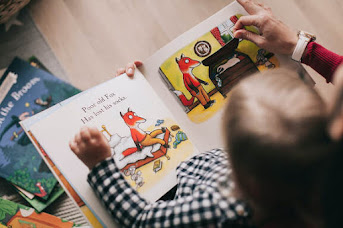How to Write and Publish a Children's Book: A Step-by-Step Guide for Aspiring Authors

There’s something magical about children’s books—the way they open tiny hearts to big dreams, the lessons hidden between whimsical pages, and the joy of storytelling for a younger audience. Whether you’ve always dreamed of writing one or were recently inspired by your own children, creating a children’s book is both an art and a craft. This guide will walk you through the entire process—from concept to publication.
Before putting pen to paper, it’s essential to understand the unique world of children’s literature. The term “children’s book” covers a wide range of age groups, and each has its own needs and expectations:
- Board Books (Ages 0–3): Simple words or even single-word pages, heavy on illustration.
- Picture Books (Ages 3–7): 500–1000 words. Stories that are read aloud, with themes like friendship, emotions, or discovery.
- Early Readers (Ages 5–7): Short sentences and basic vocabulary, for children just learning to read independently.
- Chapter Books (Ages 6–9): 1,000–10,000 words. Simple chapters, minimal illustrations, with stories that build suspense and character.
- Middle Grade (Ages 8–12): 20,000–50,000 words. More complex plots and themes, less reliance on pictures.
- Young Adult (YA) (Ages 13+): 50,000–100,000 words. Themes of identity, first love, or personal struggle.
Tip: Visit your local bookstore or library. Browse the shelves, note what’s popular, and consider what gap your book could fill.
Great children’s books start with a powerful idea—but not just any idea. It needs to be relatable, age-appropriate, and imaginative.
Ask yourself:
- What lesson or message do I want to share?
- Is my main character someone kids can connect with?
- Can this concept hold a child's attention from start to finish?
Whether it's a dancing hippo who learns to be proud of her size or a boy who tames his nightmares with kindness, simplicity paired with creativity is key.
Now comes the writing! Each type of children’s book has its own format, but all great stories have a clear structure:
The Classic 3-Act Structure:
- Beginning: Introduce the character and their world.
- Middle: Present a conflict or challenge.
- End: Resolve the problem and deliver a satisfying conclusion.
Tips for Writing for Children:
- Use clear, simple language.
- Don’t “talk down” to children. Treat them as intelligent readers.
- Create a strong protagonist they can root for.
- Add rhythm or rhyme (for younger readers), but only if it comes naturally.
- Keep the pacing tight—especially for picture books.
Illustrations are essential in board and picture books. As the author, you don’t need to illustrate the book yourself—publishers typically pair you with an illustrator. But if you’re self-publishing, you’ll need to hire a freelance illustrator or collaborate with one.
Choosing an Illustrator:
- Look at portfolios on sites like Behance, DeviantArt, or Reedsy.
- Make sure their style matches your story’s tone.
- Negotiate clear contracts around payment, rights, and timelines.
Even the best manuscripts need revising. Children’s books, especially, benefit from tight language and clean structure.
Do:
- Read your manuscript aloud.
- Ask for feedback from parents, teachers, or writers.
- Hire a children’s book editor or use online editing platforms.
- Pay attention to page turns and flow (especially for picture books).
There are two primary routes to publishing your book: traditional publishing and self-publishing.
Traditional Publishing:
- Submit your manuscript and query letter to publishers or agents.
- Most picture book authors submit without illustrations unless they are illustrators themselves.
- If accepted, the publisher handles editing, illustration, printing, and distribution.
Pros: No upfront costs, access to
bookstores, professional support
Cons: Competitive, long timelines, less control
Self-Publishing:
- Use platforms like Amazon KDP, IngramSpark, or Lulu to publish your book.
- You’ll need to hire editors, illustrators, and designers.
- You control the timeline, rights, and royalties.
Pros: Creative freedom, faster
publishing, full royalties
Cons: Higher upfront costs, marketing falls on you
Whether self-publishing or working with a team, formatting matters.
For Print Books:
- Picture books are typically 32 pages.
- Choose trim sizes based on age group.
- Use professional layout software or hire a designer.
For eBooks:
- Use EPUB format.
- Ensure text and images scale well on devices.
- Interactive children’s ebooks can work well on tablets.
Even the best children’s book won’t sell if no one hears about it. Marketing is essential.
Strategies:
- Build a website or landing page.
- Start an Instagram or TikTok account with storytime videos or sneak peeks.
- Reach out to mommy bloggers, kidlit reviewers, and local media.
- Offer free copies to schools or libraries.
- Host virtual storytimes or school visits.
Consider creating a series or accompanying activity book to expand your offerings.
Where and how you sell your book matters.
- Online Platforms: Amazon, Barnes & Noble, Bookshop.org
- In-Person: Local bookstores, craft fairs, school book fairs
- Libraries & Schools: Donate copies and follow up with outreach
- Foreign Rights & Licensing: Consider working with a literary agent to expand globally
Children’s books leave lasting impressions—they can shape a child’s worldview, comfort them, make them laugh, or spark their imagination. If your story is heartfelt, well-crafted, and honestly told, it will find its way into the right hands.
Remember: Every great children’s author started with a single story and a little dream.
- SCBWI (Society of Children’s Book Writers and Illustrators): www.scbwi.org
- Reedsy Marketplace (Editors/Illustrators): www.reedsy.com
- KDP Children’s Book Creator Tool: kdp.amazon.com



Comments
Post a Comment